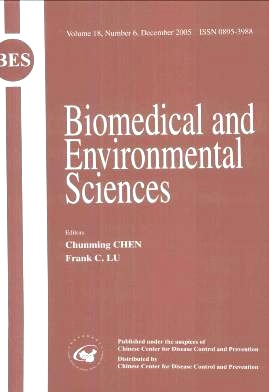Report on Childhood Obesity in China (1) Body Mass Index Reference for Screening Overweight and Obesity in Chinese School-age Children
-
Key words:
- Body mass index,Chinese school-age children /
- Overweight /
- Reference
Abstract: Purpose To establish and propose a national body mass index (BMI) reference for screening overweight and obesity in Chinese school-age children and adolescents. Methods 2000 CNSSCH (Chinese National Survey on Students Constitution and Health) data, including 216 620 primary and secondary school students aged 7 to 18 years old, were used as a reference population. Compared with those of the NCHS internatioanl reference, three temporary sets of cut-off BMI were proposed by testing different combinations of P8s, P9o, and P95. When physiological and biochemical measures between and among "obesity","overweight", and "normal weight" groups were taken into consideration, set Ⅱ was selected to be the most appropriate one.The sex-age-specific curves were then plotted and smoothed by using B-spline method. Results Based on the samples from costal developed metropolis, the BMI curves successfully overcame the shortcomings of lower and level-off tendency of the Chinese total population. Temporary set Ⅱ, composed by cut-offs of P85 for overweight and P95 for obesity, was finally selected by its sensitivity and peculiarity. BMI 24 and 28 were used as cut-offs for overweight and obesity for both males and females aged 18 years old. These cut-offs, consistent with Chinese Adult's Reference, was proposed as the Body mass index reference for screening overweight and obesity in Chinese school-age children and adolescents. Conclusion The new reference clearly showed its superiorty in both prospectivity and actuality. The proposed reference minimized the gaps of the BMI curve between Chinese adolescents and the international reference. Most importantly was that it was consistent with the Eastern Asia ethnic characteristics of body fatness growth. It was therefore proposed by the Working Group on Obesity in China (WGOC) to use it as an nationwide reference for screening overweight and obesity of school-age children and adolescents in China.
| Citation: | CHENGYE JI, COOPERATIVE STUDY ON CHILDHOOD OBESITY, WORKING GROUP ON OBESITY IN CHINA (WGOC). Report on Childhood Obesity in China (1) Body Mass Index Reference for Screening Overweight and Obesity in Chinese School-age Children[J]. Biomedical and Environmental Sciences, 2005, 18(6): 390-400. |







 Quick Links
Quick Links
 DownLoad:
DownLoad: